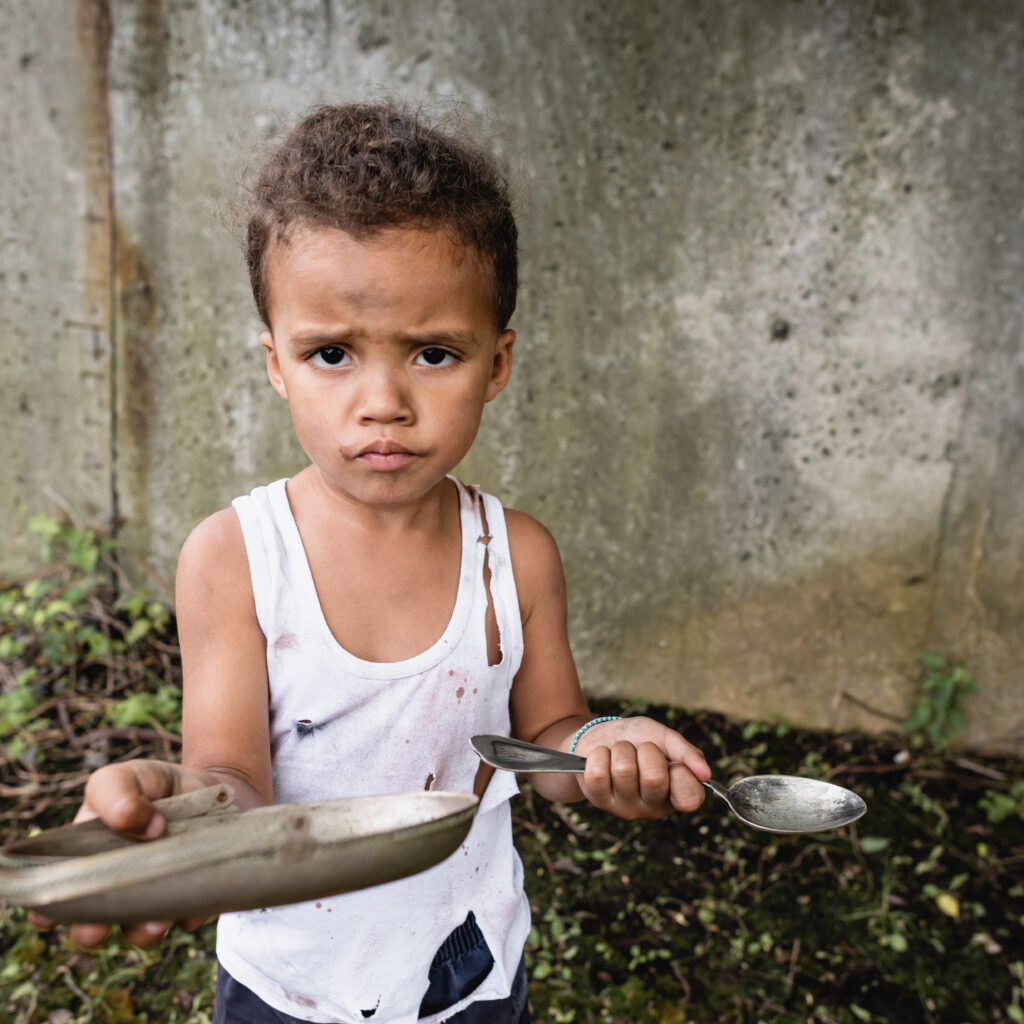In order to function properly, our body needs a variety of nutrients, and in certain amounts. When one fails to do this, malnutrition often happens, causing serious health consequences to one’s body. Nonetheless, whereas an overall lack of nutrients counts as malnourishment, so does overabundance of some nutrients and lack of others.
Sadly, malnourishment remains a significant concern in the Philippines. Populations from the poor and low-income families and households grapple with it on a daily basis, since the foods they have access to are usually low in nutritional value. And this predicament affects children the most, putting them at greater risk of dying from common infections.
As malnutrition in children continues to be a pressing issue today, Childhope Philippines aims to be a beacon of light for the underprivileged. Here are a few facts about child malnutrition, and how you can help these children get access to proper nutrition.
What is Malnutrition?
As noted, malnutrition can mean either undernutrition or overnutrition. Here are the key differences between them.
Undernutrition
When talking about malnutrition, people usually associate it with undernutrition, or a deficiency of nutrients. This happens if one doesn’t follow an adequate diet, meaning that a person can be both undernourished and overweight at the same time.
Overnutrition
The World Health Organization has recently added recognized overnutrition to refer to the excessive intake of nutrients, and how detrimental it can be to children. This includes the effects of being overweight and obese, as well as of overdosing in specific micronutrients.

Key Facts About Malnutrition in Children
For the longest time, child malnutrition has been a problem not only in the Philippines, but also worldwide. The UN acknowledges that, as a global challenge affecting both developed and developing countries, malnutrition can take different forms, including undernutrition, micronutrient deficiencies, and overnutrition.
As a result, malnutrition in children can severely affect their physical and cognitive development. These include stunted growth, impaired brain development, weakened immune systems, increased susceptibility to diseases, and even death in severe cases. In fact, reports show that undernutrition accounts for nearly half of all deaths in children under 5 years of age.
In line with that staggering figure, the May 2023 report from UNICEF about malnutrition in children states that while stunting (low height for age) has steadily declined since 2000, “faster progress is needed to reach the 2030 target.” This means that more intensive efforts are required in order to achieve the goal of reducing the number of children with stunting on a global scale.
Thus, the organization aims to spearhead a multisectoral humanitarian response with their sustainable development goals that aim to end hunger, achieve food security, promote sustainable agriculture, and improve overall nutrition.
What are the 4 Types of Malnutrition?
Food nutrition involves macronutrients (proteins, carbohydrates, and fats) and micronutrients (vitamins and minerals). Both components need to achieve a balance in order to maintain a healthy wellbeing. Sadly, malnutrition, especially in children, indicates an imbalance of macronutrients and micronutrients.
Here are the 4 types of malnutrition:
- Macronutrient Undernutrition: Deficiency of macronutrients, such as proteins, carbohydrates, and fats
- Micronutrient Undernutrition: Deficiency of micronutrients, namely vitamins and minerals. This also includes being mildly deficient in certain vitamins and minerals due to a lack of variety in the diet
- Macronutrient Overnutrition: Excess in protein, carbohydrate, and/or fat calorie intake
- Micronutrient Overnutrition: Overdosing on vitamin and mineral supplements, which can have toxic effects when taken in large quantities
Causes of Malnutrition in the Philippines
Child malnutrition remains a significant concern in the Philippines. In fact, we have been grappling with high levels of child malnutrition for several years, with both undernutrition and overnutrition posing challenges to the overall child health.
There are various causes of malnutrition in children in the Philippines, and below are just some of them:
Poverty and Food Scarcity
Families living in poverty may struggle to afford an adequate and nutritious diet for their children, leading to malnutrition. Food insecurity, which refers to a lack of consistent access to nutritious food, is a significant factor contributing to child malnutrition.
Inadequate Diet
In line with the abovementioned cause, malnourishment occurs when poor families make do with what affordable or free food they can find. Unfortunately, oftentimes those foods lack nutritional value and essential nutrients. Children especially need sufficient proteins, carbohydrates, fats, vitamins, and minerals.
Infections and Illnesses
Frequent infections, such as gastrointestinal infections or respiratory illnesses, can affect a child’s appetite, nutrient absorption, and overall nutritional status. Chronic illnesses or conditions that affect the digestive system can also contribute to malnutrition.
Lack of Access to Healthcare
The lack of access to healthcare services can significantly hinder the management of malnutrition in children. These include limited access to prenatal care, child healthcare, and nutritional support.
Other Environmental Factors
Certain environmental factors, such as unsafe water and sanitation, can contribute to the risk of malnutrition in children. As a result, they run the risk of being more susceptible to infections and poor hygiene practices.

How to Prevent Malnutrition in Children
Preventing malnutrition in children requires a comprehensive and multifaceted approach. Some of the practical ways involve the following initiatives:
Adequate and Nutritious Diet
Ensure children have access to a diverse and balanced diet. Provide nutrient-rich foods that would strengthen the children’s health by meeting their nutritional needs.
Nutrition Education
It’s important to educate everyone about proper nutrition, optimal feeding practices, and the importance of a balanced diet. Through community efforts this can be done and with the help of health workers, healthcare providers, and mass media campaigns to raise awareness.
Access to Quality Healthcare
Finally, access to quality healthcare services is critical. Healthcare providers can also provide guidance on appropriate feeding practices, nutrition counseling, and early detection of malnutrition in children.
Kalyenderia: Childhope’s Initiative to Address Hunger and Malnutrition in Children
To stay at the forefront of addressing malnutrition in children, Childhope Philippines launched the Kalyenderia Mobile Soup Kitchen. This community feeding program initiative mainly focuses on sharing nutritious food with less-fortunate beneficiaries, especially street children. Even after the global pandemic slowed down, it remains hard for the street children to have access to nutritious meals or to even eat regularly. With this in mind, Kalyenderia looks to address and alleviate hunger by providing meals to street families in Manila.
In a nutshell, Kalyenderia believes that promoting children’s health and development is the main priority. Thus, by providing them meals with high nutritional value, the beneficiaries in the long run will have become healthy and well-developed individuals.
With initiatives like our mobile soup kitchen, we yearn to provide holistic development for the Filipino street children by fighting child malnutrition, thereby helping them achieve a better life that they deserve.

Support Childhope Philippines to Combat Malnutrition in Children
Everyone has the right to nutritious food, especially children living in the streets. Eliminating or at least reducing hunger is one of the sustainable development goals that everyone should aspire for. Indeed a noble cause, combating poverty and malnutrition in children will give you a sense of fulfillment that you have done something worthwhile.
Be the hope of these children in poverty. Therefore, we encourage everyone to create meaningful impact. You can either donate or volunteer to help us realize and further advance our efforts. Your time, efforts, and resources will help create a positive impact and empower them to have a better future.
